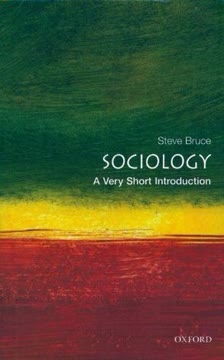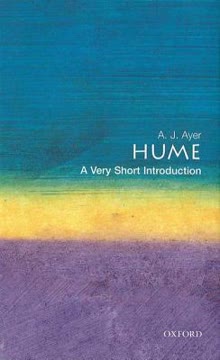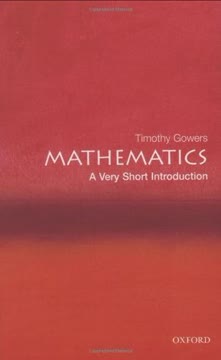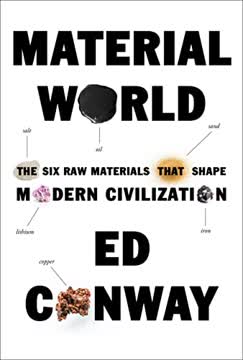Key Takeaways
1. Diplomacy evolves from state-centric to global, encompassing diverse actors
Diplomacy has become something very much more than the diplomacy of states and governments.
Traditional to modern. Diplomacy has transformed from a state-centric practice to a global phenomenon involving diverse actors. While the 1961 Vienna Convention on Diplomatic Relations still formally recognizes only state diplomacy, the reality on the ground is far more complex.
New players emerge. The diplomatic landscape now includes:
- Transnational corporations (TNCs)
- Intergovernmental organizations (IGOs)
- Non-governmental organizations (NGOs)
- Civil society organizations (CSOs)
These entities create their own diplomatic networks, operating both within and outside traditional diplomatic channels. The rise of public diplomacy, which aims to influence foreign publics, further blurs the lines between official and unofficial diplomacy.
2. Treaties shape international relations and define diplomatic landscape
The principle that treaties validly concluded are binding on the signatories, who must adhere to them in good faith, is a cardinal rule in international law.
Cornerstone of diplomacy. Treaties serve as the foundation of modern international relations, providing a formal framework for agreements between nations. They cover a wide range of issues, from peace and security to trade and environmental protection.
Key aspects of treaties:
- Require proper authorization and freedom of action by signatories
- Can be multilateral (involving multiple parties) or bilateral (between two parties)
- May include clauses like "most-favored-nation" status in trade agreements
- Can be terminated under specific conditions, such as material changes in circumstances
The Vienna Convention on the Law of Treaties (1969) codified international law governing treaties, providing a standardized approach to their creation, interpretation, and termination.
3. World War I's origins rooted in alliance diplomacy and militarization
It was the entangling alliances that created the house of cards that when war broke out, or for that matter when the Russian Empire declared mobilization of its armies, collapsed, and the Great Powers – minus Italy, which held out for the highest bidder – went to war.
Alliance system backfires. The complex web of alliances in pre-WWI Europe, intended to maintain balance and prevent conflict, ultimately contributed to the war's rapid escalation. When crisis struck, these agreements pulled nations into a wider conflict.
Militarization fuels tensions:
- Germany's Schlieffen Plan, designed for a quick victory, required invading neutral Belgium
- Arms race between major powers increased military readiness and tensions
- Belief in the inevitability of war led to aggressive military planning
The assassination of Archduke Franz Ferdinand in Sarajevo served as the spark that ignited these underlying tensions, leading to a global conflict that reshaped the international order.
4. Versailles Treaty's punitive measures sowed seeds for future conflict
Keynes had given them misgivings about taking territory from Germany, while demanding reparations for the cost of the war. Was it right to impose such hardships on a country already devastated by war?
Harsh peace terms. The Treaty of Versailles, ending World War I, imposed severe punishments on Germany:
- Territorial losses
- Military restrictions
- Massive reparations payments
- "War guilt" clause assigning sole responsibility for the conflict
Unintended consequences. These punitive measures, while satisfying Allied desires for revenge, created long-term problems:
- Economic hardship in Germany fueled resentment and political instability
- Loss of territory and national pride contributed to the rise of extremist ideologies
- Weakening of Germany disrupted the European balance of power
Critics like economist John Maynard Keynes argued that the treaty's harshness would lead to economic depression and future conflict. These predictions proved tragically accurate, as the treaty's legacy contributed to the conditions that led to World War II.
5. Churchill-Stalin percentage agreement shaped post-WWII Europe
'Let us settle about our affairs in the Balkans.' Specifically, he went on: 'We have interests, missions, and agents there. Don't let us get at cross‐purposes in small ways. So far as Britain and Russia are concerned, how would it do for you to have ninety per cent dominance in Rumania, for us to have ninety per cent of the say in Greece, and go fifty‐fifty about Yugoslavia?'
Backroom dealmaking. In October 1944, British Prime Minister Winston Churchill and Soviet leader Joseph Stalin met secretly to discuss spheres of influence in post-war Eastern Europe. This informal "percentage agreement" sought to divide control over various countries between the Western Allies and the Soviet Union.
Implications of the agreement:
- Attempted to avoid conflicts between Allied powers in the region
- Recognized the reality of Soviet military dominance in much of Eastern Europe
- Excluded the United States from direct involvement in these decisions
- Foreshadowed the Cold War division of Europe into Western and Soviet spheres
While not a formal treaty, this agreement influenced post-war policies and contributed to the tensions that would define the Cold War era. It also demonstrated the pragmatic, power-based approach to diplomacy employed by leaders like Churchill and Stalin.
6. ANZUS Treaty exemplifies small powers' pursuit of security alliances
Put simply, Canberra wanted strategic reassurance that America would come to Australia's aid in its next time of troubles; Washington wanted cooperation, an opportunity to take advantage of Australia's unique geographical position in the western Pacific, as well as the overall political position in Southeast Asia.
Asymmetrical alliance. The ANZUS Treaty, signed in 1951 between Australia, New Zealand, and the United States, illustrates how smaller powers seek security guarantees from larger allies. Australia, in particular, pursued this alliance to ensure American protection against potential threats in the Asia-Pacific region.
Key aspects of ANZUS:
- Provided Australia with a formal security link to the United States
- Offered the US strategic benefits in the western Pacific
- Reflected Cold War concerns about communist expansion
- Demonstrated the challenges of balancing national interests in an alliance
The treaty's negotiation and implementation revealed the complexities of diplomacy between nations of vastly different sizes and capabilities. While Australia sought firm commitments, the US aimed for flexibility and broader regional influence.
7. Globalization transforms diplomacy, introducing new challenges and actors
A defining feature of 21st‐century globalization is the increasing complexity of global relations and the rapidity with which information ricochets around the world, opening up new avenues for the conduct of diplomacy, while helping new participants to become involved.
Interconnected world. Globalization has fundamentally altered the practice of diplomacy by creating a more complex, interconnected, and rapidly changing international environment. This new landscape presents both challenges and opportunities for diplomatic actors.
Key features of globalized diplomacy:
- Increased role of non-state actors (NGOs, corporations, civil society groups)
- Rise of "polymorphous" security threats (e.g., climate change, terrorism, pandemics)
- Growing importance of economic diplomacy and global governance institutions
- Need for rapid response to crises and information flows
- Emergence of regional organizations as diplomatic players
Diplomats must now navigate a multi-layered system of global, regional, and local interests, often addressing issues that transcend traditional state boundaries. This requires new skills, adaptability, and a broader understanding of diverse global challenges.
Last updated:
FAQ
What's "Diplomacy: A Very Short Introduction" about?
- Historical Perspective: The book provides an introduction to the subject and study of diplomacy from a historical perspective, illustrating the art of diplomacy in action through significant historical phases and episodes.
- Evolution of Diplomacy: It traces the evolution of diplomacy from its primitive origins in the Bronze Age to its modern form, highlighting key changes in methods and practices over time.
- Case Studies: The book uses case studies to demonstrate the varying demands on diplomats and the impact of diplomacy on statecraft and international relations.
- Key Themes: It explores themes such as treaty-making, the diplomacy of the American Revolution, the origins of the Great War, and the diplomacy in the age of globalization.
Why should I read "Diplomacy: A Very Short Introduction"?
- Comprehensive Overview: The book offers a concise yet comprehensive overview of the history and practice of diplomacy, making it accessible to general readers.
- Insightful Analysis: It provides insightful analysis of how diplomacy has shaped major historical events and the global world we live in today.
- Educational Value: Readers can gain a deeper understanding of the complexities and nuances of diplomatic practices and their significance in international relations.
- Engaging Case Studies: The use of engaging historical case studies helps to illustrate the practical application and evolution of diplomatic strategies.
What are the key takeaways of "Diplomacy: A Very Short Introduction"?
- Diplomacy's Evolution: Diplomacy has evolved significantly from its early forms, adapting to changes in communication, technology, and international relations.
- Role of Negotiations: Negotiations are a universal aspect of diplomacy, aiming to achieve agreements that are better than the fundamental positions of the parties involved.
- Impact on Statecraft: Skilful diplomacy is crucial for political success and can have profound ramifications for the fate of nations.
- Globalization's Influence: The age of globalization has expanded the scope of diplomacy beyond states to include transnational corporations, intergovernmental organizations, and civil society organizations.
How does Joseph M. Siracusa define diplomacy in the book?
- Historical Definition: Diplomacy is defined as the management of relations between independent states through negotiations, as well as the art of saying the right things at the right time.
- Evolutionary Perspective: The book emphasizes the evolution of diplomacy, highlighting how it has adapted to different historical contexts and challenges.
- Universal Role: Diplomacy is portrayed as a universal practice that involves negotiations aimed at achieving agreements that are better than the fundamental positions of the parties involved.
- Modern Context: In the age of globalization, diplomacy extends beyond state actors to include various non-state entities, reflecting the complexity of modern international relations.
What are the best quotes from "Diplomacy: A Very Short Introduction" and what do they mean?
- "Diplomacy has been around a very long time." This quote underscores the ancient origins of diplomacy and its enduring relevance throughout history.
- "The art of saying nice 'doggie' until you can find a rock." This humorous definition highlights the strategic and sometimes deceptive nature of diplomatic negotiations.
- "Diplomacy was and is an important element of statecraft." This emphasizes the critical role of diplomacy in achieving political success and shaping international relations.
- "The story of diplomacy also reads as a cautionary tale." This suggests that while diplomacy can lead to positive outcomes, it can also result in unintended consequences and failures.
How does the book explore the evolution of diplomacy?
- Historical Origins: The book traces the origins of diplomacy back to the Bronze Age, highlighting early forms of diplomatic communication and negotiation.
- Key Developments: It examines key developments in diplomatic practices, such as the establishment of foreign ministries and the role of ambassadors.
- Modern Adaptations: The book discusses how diplomacy has adapted to modern challenges, including the impact of globalization and technological advancements.
- Case Studies: Through case studies, the book illustrates how diplomatic methods have evolved in response to changing historical contexts and international dynamics.
What role did diplomacy play in the American Revolution according to the book?
- Quest for Foreign Aid: Diplomacy was crucial in securing foreign aid from European powers, particularly France, which was essential for the colonies' military success.
- French Alliance: The book details the diplomatic efforts that led to the Treaty of Amity and Commerce and the Treaty of Alliance with France, which provided vital support to the American cause.
- Negotiation of Peace: Diplomats like Benjamin Franklin played key roles in negotiating peace with Great Britain, resulting in the Treaty of Paris and the recognition of American independence.
- Strategic Realism: The book highlights the strategic realism of American diplomats, who prioritized power and practical considerations over ideology in their negotiations.
How does the book address the diplomatic origins of the Great War?
- Alliance Diplomacy: The book explores the complex web of alliances and rivalries that contributed to the outbreak of World War I, including the entangling alliances between major powers.
- German Militarization: It discusses the militarization of German diplomacy and the influence of the German officer corps on foreign policy decisions.
- Franco-German Enmity: The book examines the historical enmity between France and Germany, which played a significant role in the lead-up to the war.
- Diplomatic Failures: The book highlights the diplomatic failures and miscalculations that led to the escalation of tensions and the eventual outbreak of war.
What insights does the book provide on the night Stalin and Churchill divided Europe?
- Balkan Spheres of Influence: The book details the secret agreement between Churchill and Stalin to divide the Balkans into spheres of influence, reflecting the realpolitik of the time.
- Personal Diplomacy: It emphasizes the role of personal diplomacy and the informal nature of the agreement, which was made with a simple exchange of percentages on a piece of paper.
- Impact on Postwar Europe: The agreement had significant implications for the postwar order in Europe, influencing the division of territories and the balance of power.
- American Involvement: The book discusses the limited involvement of the United States in the agreement and the subsequent tensions between the Allies over the division of Europe.
How does the book describe the ANZUS Treaty and its significance?
- Cold War Context: The book places the ANZUS Treaty within the context of the Cold War, highlighting the strategic interests of Australia, New Zealand, and the United States.
- Bipartisan Determination: It emphasizes the bipartisan determination of Australian leaders to secure a binding security relationship with the United States.
- Negotiation Challenges: The book details the challenges and negotiations involved in establishing the treaty, including the differing priorities of the involved parties.
- Strategic Reassurance: The ANZUS Treaty provided strategic reassurance to Australia and New Zealand, ensuring American support in the event of regional conflicts.
What does the book say about diplomacy in the age of globalization?
- Expanded Scope: The book discusses how globalization has expanded the scope of diplomacy beyond states to include transnational corporations, intergovernmental organizations, and civil society organizations.
- Complex Crises: It highlights the complexity of modern global relations and the interconnected nature of security issues, which require coordinated diplomatic efforts.
- Public Diplomacy: The book explores the role of public diplomacy in shaping international relations and influencing public attitudes towards foreign policy.
- Challenges and Opportunities: Globalization presents both challenges and opportunities for diplomacy, requiring adaptation to new actors and issues in the international arena.
How does the book address the role of non-state actors in modern diplomacy?
- Civil Society Organizations: The book highlights the increasing influence of civil society organizations in global diplomacy, particularly in areas like humanitarian aid and advocacy.
- Transnational Corporations: It discusses the role of transnational corporations in shaping economic diplomacy and their impact on global trade and investment.
- Intergovernmental Organizations: The book examines the diplomatic functions of intergovernmental organizations like the World Trade Organization in facilitating international cooperation.
- Complex Networks: Modern diplomacy involves complex networks of state and non-state actors, requiring new approaches to negotiation and conflict resolution.
Review Summary
Diplomacy receives mixed reviews, with an average rating of 3.15/5. Some readers found it informative and well-written, appreciating its historical examples and concise format. However, many felt it lacked depth in explaining diplomatic tactics and theories, focusing more on historical events than the practice of diplomacy itself. Critics noted its Eurocentric perspective and overreliance on quotations. While some praised its accessibility, others found it dry and disconnected. The book's coverage of 20th-century diplomacy and globalization received both praise and criticism.
Very Short Introductions Series Series












Similar Books










Download PDF
Download EPUB
.epub digital book format is ideal for reading ebooks on phones, tablets, and e-readers.




